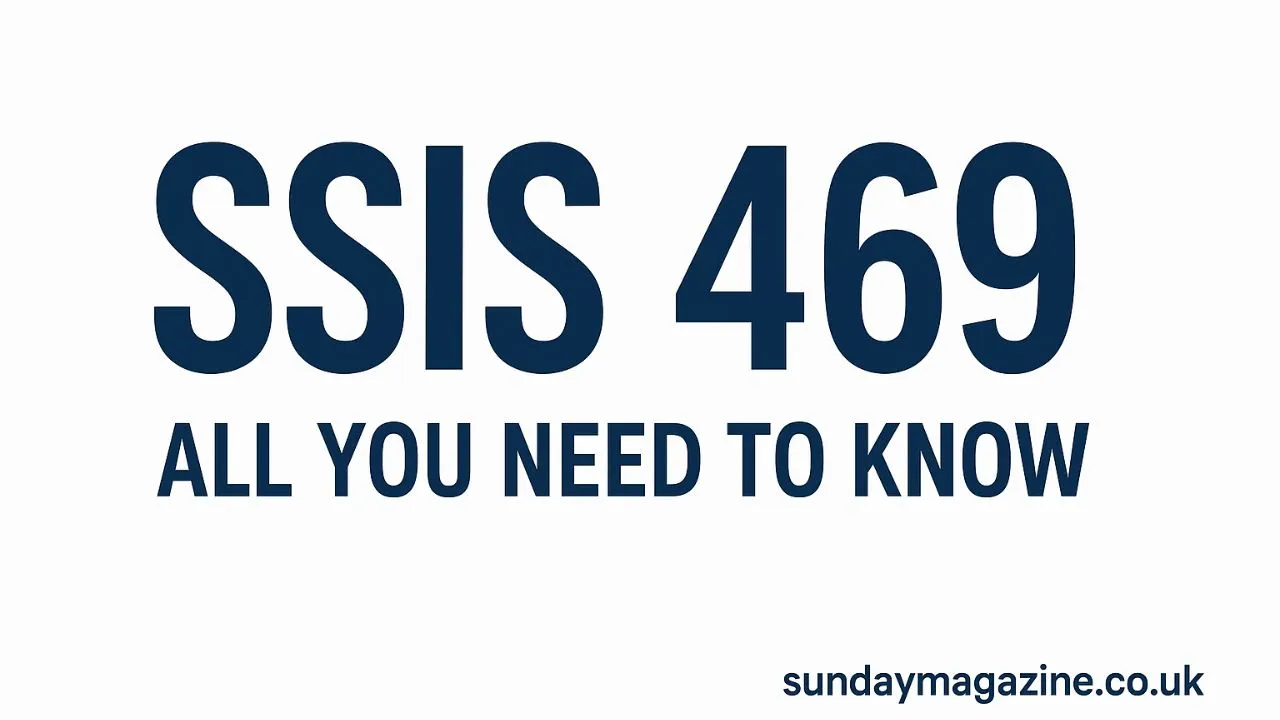Introduction
SSIS 469 is a federally mandated framework for systematic improvement and compliance in Medicaid programs. It includes requirements for data collection, reporting, and outcome tracking to ensure effective healthcare delivery across states.
If you are involved in healthcare data processing, insurance claims, or government healthcare programs, you may have encountered the term SSIS 469. This document, formally known as the Statewide Systemic Improvement Strategy 469, plays a critical role in data exchange, compliance, and reporting processes related to Medicaid and other state-run healthcare initiatives.
In this comprehensive guide, we’ll cover everything you need to know about SSIS 469, including its purpose, structure, implementation strategies, and compliance requirements. Our focus will be on answering the most frequently asked questions and providing actionable steps to ensure you stay compliant and informed.
ALSO READ: Herbciepscam Revealed: The Dark Side of Muscle Growth Promises
What is SSIS 469?
It refers to a Medicaid reporting and data strategy framework mandated by CMS (Centers for Medicare & Medicaid Services) to ensure the proper and systematic improvement of healthcare services across various states.
Key Objectives
- Enhance data consistency in Medicaid reporting
- Improve statewide service delivery through systemic strategies
- Monitor and track the progress of improvement activities
- Foster accountability and transparency in healthcare services
Why Was SSIS 469 Introduced?
It was introduced as part of CMS’s larger strategy to address discrepancies in data reporting and to support the IDEA (Individuals with Disabilities Education Act) through enhanced monitoring and data-driven decision-making.
Who Needs to Comply with SSIS 469?
Compliance with it is mandatory for:
- State Medicaid agencies
- Healthcare providers participating in state programs
- Data exchange vendors
- Analysts responsible for Medicaid and healthcare reporting
Understanding whether it applies to your organization is crucial. Typically, if you deal with Medicaid data at any level, compliance with SSIS 469 will likely be required.
Structure and Components
Key Components of the SSIS 469 Framework
- Data Collection: Collecting accurate and complete data sets from various sources such as EHRs (Electronic Health Records) and claims data.
- Data Integration: Harmonizing data formats for centralized analysis and reporting.
- Performance Indicators: Using key metrics to evaluate service delivery effectiveness.
- Improvement Strategies: Developing targeted interventions based on data insights.
- Reporting: Timely submission of reports to CMS in prescribed formats.
Example Data Metrics Tracked in SSIS
- Number of patients served by Medicaid programs
- Frequency and duration of services provided
- Health outcomes and benchmarks
- Compliance with treatment guidelines
How to Implement SSIS 469: A Step-by-Step Guide
Step 1: Understand the Requirements
Begin by thoroughly reviewing its documentation provided by CMS. Pay close attention to:
- Reporting formats
- Data submission deadlines
- Required data fields
Step 2: Conduct a Compliance Audit
Evaluate your current systems for gaps in:
- Data integrity
- Documentation practices
- Process workflows
Step 3: Upgrade Data Systems
Ensure your IT infrastructure supports:
- HL7 or FHIR standards for data interoperability
- Secure and compliant data exchange protocols
Step 4: Train Your Team
Develop a training plan for staff on:
- SSIS 469 goals and standards
- Using tools and dashboards for reporting
- Ensuring data quality and accuracy
Step 5: Establish Reporting Mechanisms
Implement dashboards and BI tools to:
- Track KPIs
- Generate automated reports
- Highlight areas for improvement
Step 6: Submit Reports and Monitor Feedback
Maintain a timeline for report submission and review any feedback from CMS for continuous improvement.
SSIS 469 Compliance Checklist
Use this checklist to ensure your organization meets SSIS requirements:
- All relevant staff trained on it
- Data collection processes standardized
- Systems support HL7/FHIR formats
- Reporting tools and dashboards implemented
- Reports submitted on schedule
- Feedback loops established for improvements
Best Practices for SSIS 469 Compliance
1. Automate Wherever Possible
Automation reduces errors and ensures timely submissions.
2. Conduct Regular Internal Audits
Stay ahead of official audits by monitoring compliance internally.
3. Collaborate With Stakeholders
Engage IT, compliance, and operations teams to build cohesive strategies.
4. Document Everything
Maintain a thorough record of:
- Submitted reports
- Staff training sessions
- System updates
Future of SSIS 469: Trends and Predictions
As healthcare technology evolves, expect SSIS 469 to become more integrated with:
- AI-driven analytics for predictive insights
- Real-time data sharing across platforms
- Increased focus on outcomes-based reporting
- Cloud-based compliance solutions
Staying informed about future changes will help your organization remain proactive and efficient.
Conclusion
SSIS 469 is more than a compliance requirement—it’s a strategic framework designed to improve the quality and transparency of Medicaid services. By understanding its components, implementing best practices, and staying updated on changes, your organization can not only comply with regulations but also enhance healthcare delivery.
Common Questions
What Does SSIS 469 Stand For?
SSIS 469 is shorthand for the “Statewide Systemic Improvement Strategy,” aligned with requirement code 469 in CMS compliance frameworks.
Is SSIS 469 Required for All States?
Yes, all states implementing Medicaid programs must adhere to its reporting standards.
How Often Should Reports Be Submitted?
Reporting frequency varies but is typically quarterly or bi-annually, as determined by your state CMS liaison.
What Are the Penalties for Non-Compliance?
Penalties may include:
- Fines
- Withholding of Medicaid funds
- Increased scrutiny during audits
What Tools Can Help With SSIS 469 Compliance?
- Microsoft SSIS (SQL Server Integration Services)
- Tableau or Power BI
- Secure FTP platforms for data transfer
- Custom-built compliance dashboards





